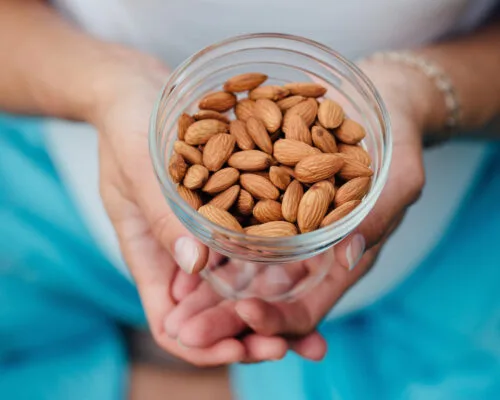Ask Keri: Can snacking be part of a healthy diet? If so, what does a healthy snack look like?
Keri Says: Lots of health experts say snacking is a bad habit that ruins your healthy diet. Let me tell you…I am not that expert.
In fact, I’m such a big fan of snacking, I wrote my first book about it. The Snack Factor Diet was all about how the problem with snacking isn’t snacking itself, it’s the way in which most people snack.
When most of us get hungry between meals, we reach for things that quickly satisfy our cravings, like sugary, salty, high-calorie foods. Think office cupcakes and bags of potato chips and even “healthy” packaged snacks that are actually less healthy than they seem. Or we go way overboard with our snacks so that it’s not really snacking at all…it’s just another (extra) meal.
To help you get on the right snack track, I’m breaking down why snacking is a good idea and how to do it right every time.
Why Snacking Is a Good Thing
Nutrient-dense snacks, eaten at the right times of day, anchor your health. While the research is mixed on whether eating frequently or less often throughout the day is best for weight maintenance, there are studies that suggest that eating every few hours stabilizes blood sugar and keeps your metabolism humming. In my work, I’ve found that snacking really helps clients feel satisfied. Plus, when you snack properly, you are more likely to make better food choices throughout the day, because you’re not starving or dealing with low blood sugar that makes you crave a sugary treat.
RELATED: What Do Your Food Cravings Really Mean?
The Elements of a Healthy Snack
Okay, so you’re ready to snack. What do you reach for? I can easily share some of my favorite snacks (and I will, below), but I also want to set you up with the knowledge you need to create a healthy snack based on whatever is available to you. You know, the whole “teach a woman to fish…” thing. The formula for a healthy snack involves a few elements.
Proportions
Every snack should ideally contain a balance of carbohydrates (with a focus on fruits and vegetables), protein, and good fats. Think celery sticks and almond butter: The veggies provide carbs while the almond butter is a great source of protein and healthy fat. This balance of macronutrients will help provide satiety (so you’re not hungry for another snack five minutes later) and give you energy.
RELATED: The Guide to Healthy Portion Sizes
Nutrient Density
Avoid packaged snacks and choose nutrient-dense whole foods that fill you up (to prevent overeating). This will also mean you’re getting lots of micronutrients along with your macros, and will make it easier to achieve those perfect proportions. Think of half an avocado with a little sea salt and some hemp seeds sprinkled on top. Avocado is a nutrient-dense food to start with, and it contains good fat and carbs, while the hemp seeds will provide the protein.
Portions
Finally, a snack should be snack-sized. (Sorry!) If you know me you know I don’t recommend counting calories, but as a reference point, a healthy snack should be around 140 to 160 calories. If you’re eating organic cheese and whole wheat or grain-free crackers, that’s going to be about an ounce of cheese and a few crackers. If you’re eating nuts, that’s about 20 almonds. Get an idea of what these kinds of portions look like, and then you you’ll be able to estimate them. Of course, everyone has different needs based on things like your body size and activity level, so that number is not hard and fast. Similarly, some people may only need one snack per day, while others need three. You’ve got to consider your own body and lifestyle and your hunger quotient. If you’re not hungry, you shouldn’t snack just to snack. Listen to your body, stick to the formula, and you’ll be a snacking pro in no time.
Oh, and some of my favorite snacks? Here are a few I like to make at home and eat all week long, and these are the ones I usually eat on the go.
(Photos: Shutterstock)
